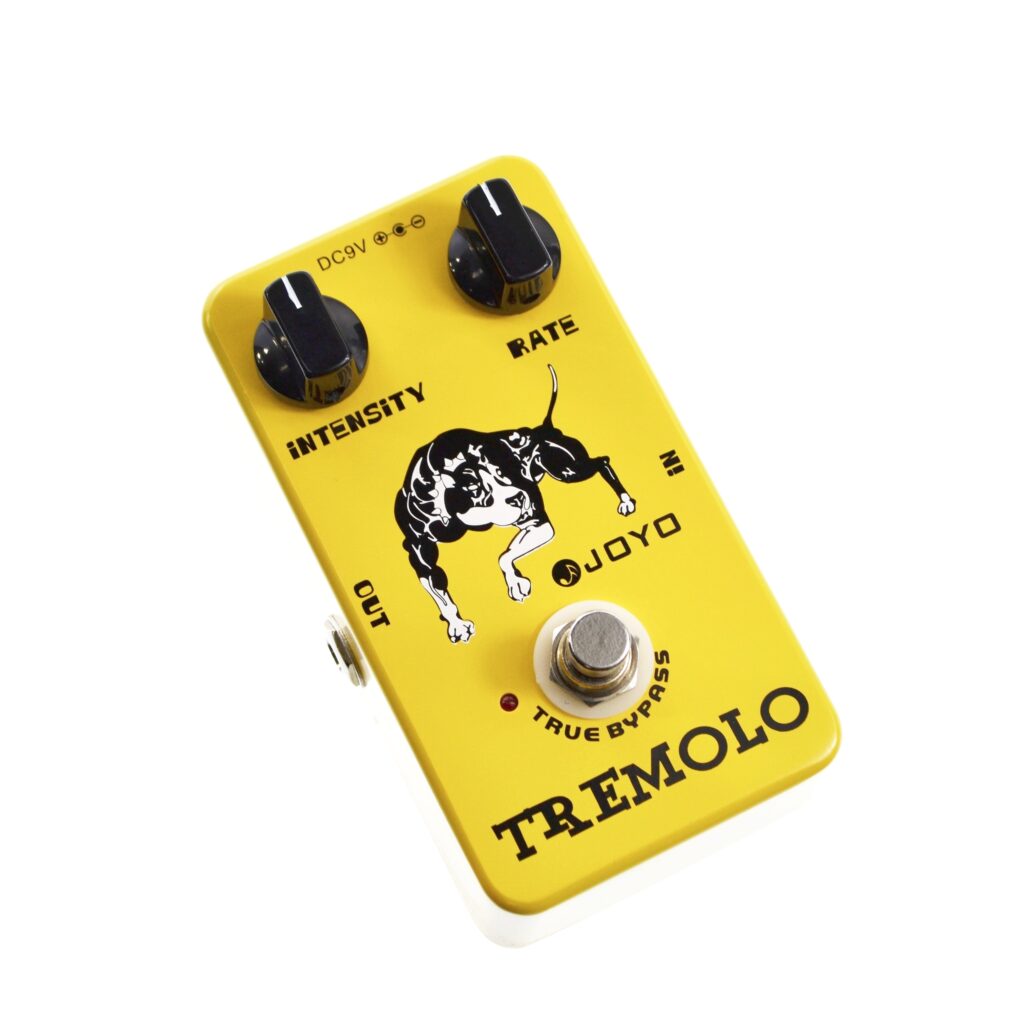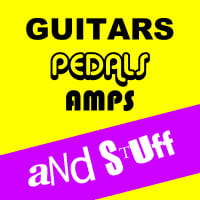
A tremolo guitar effect alters the volume of the guitar signal in a rhythmic, cyclic manner, creating a pulsating or wavering sound. It’s important to note that tremolo in the context of guitar effects refers to volume modulation, not pitch modulation (which is often confused with vibrato).
How Tremolo Works
Volume Modulation:
Tremolo effect pedals modulate the volume of the guitar signal at a specified rate (speed) and depth (intensity). This modulation creates a cyclical rise and fall in volume, producing a rhythmic pulsation.
Types of Tremolo:
There are various types of tremolo effects, including optical tremolo, bias tremolo, harmonic tremolo, and amplitude tremolo. Each type varies in the way it modulates the volume, resulting in different tonal characteristics.
Usage and Techniques
Creating Rhythmic Texture:
Tremolo adds a rhythmic texture to the guitar sound, enhancing the musicality of a song or providing a unique ambiance.
Songs Featuring Tremolo:
Some iconic songs that feature tremolo effects include “How Soon Is Now?” by The Smiths, “Rumble” by Link Wray, “Misirlou” by Dick Dale, and “I’m So Afraid” by Fleetwood Mac, among others.
Speed and Depth Settings:
Guitarists can adjust the speed and depth controls on the tremolo pedal to modify the rate and intensity of the volume modulation, allowing for variations in the pulsating effect.
Placement in the Signal Chain:
Tremolo effects are typically placed after distortion/overdrive pedals but before time-based effects like delay or reverb in the signal chain.
How to Use a Tremolo Effect
Step 1: Connecting the Pedal:
Connect the tremolo pedal in the guitar signal chain using instrument cables.
Step 2: Adjusting Controls:
Set the speed and depth knobs on the tremolo pedal to determine the rate and intensity of the pulsating effect. Experiment with different settings to achieve the desired rhythmic texture.
Step 3: Playing Technique:
Play your guitar as usual while engaging the tremolo effect. The pulsating sound will be applied to the notes or chords you play, adding a rhythmic variation to your sound.
Step 4: Experimentation:
Experiment with playing styles, speeds, and depths to explore various tremolo sounds. Adjust the pedal settings to match the tempo and mood of the music you’re playing.
Conclusion
Tremolo is a classic guitar effect that introduces rhythmic pulsation to the guitar signal by modulating its volume. It adds depth, texture, and rhythmic variation to guitar tones, allowing guitarists to create evocative sounds that enhance the mood and atmosphere of their music. Mastering the control of speed and depth enables guitarists to employ tremolo creatively, adding a unique dimension to their playing style and musical expression.

